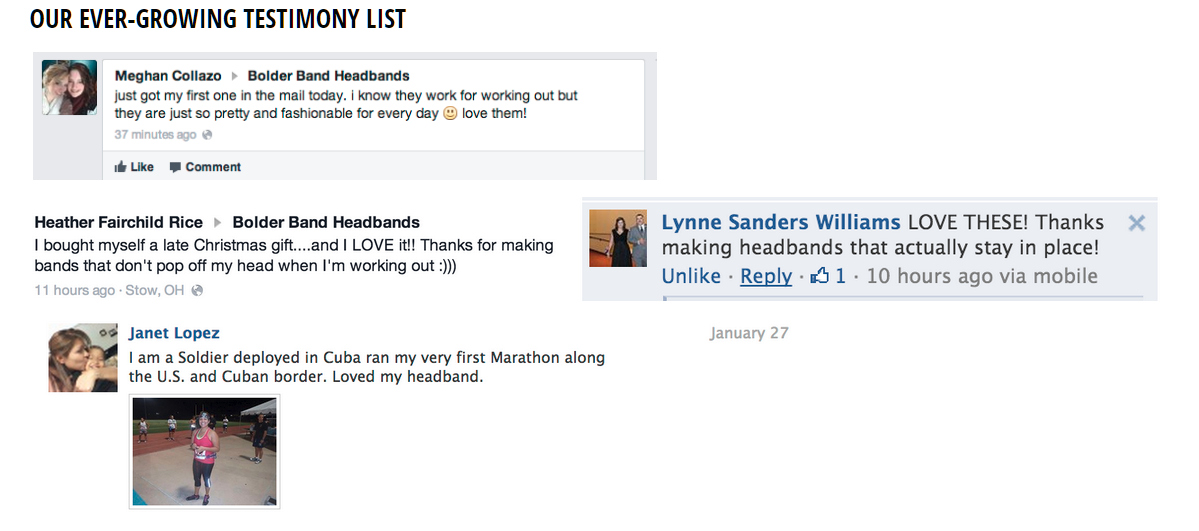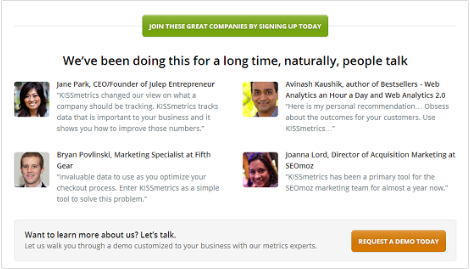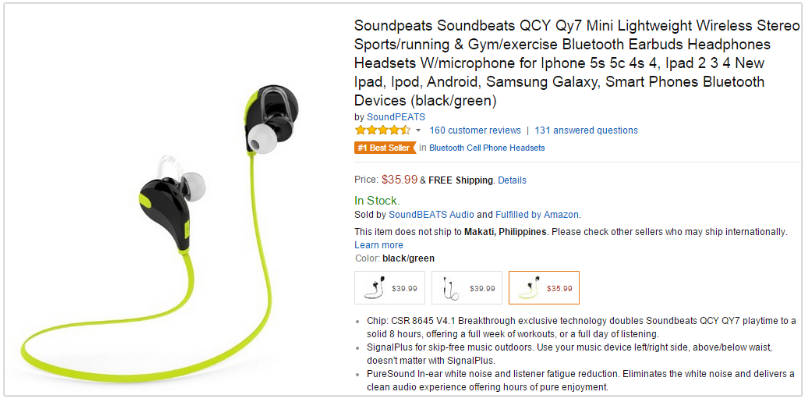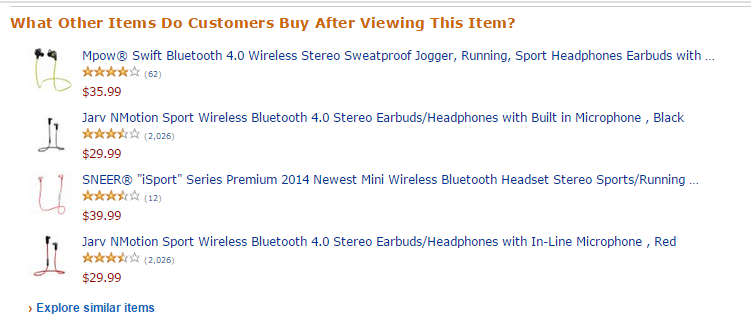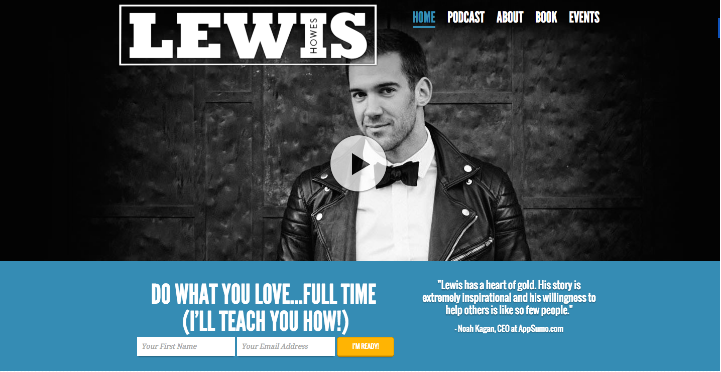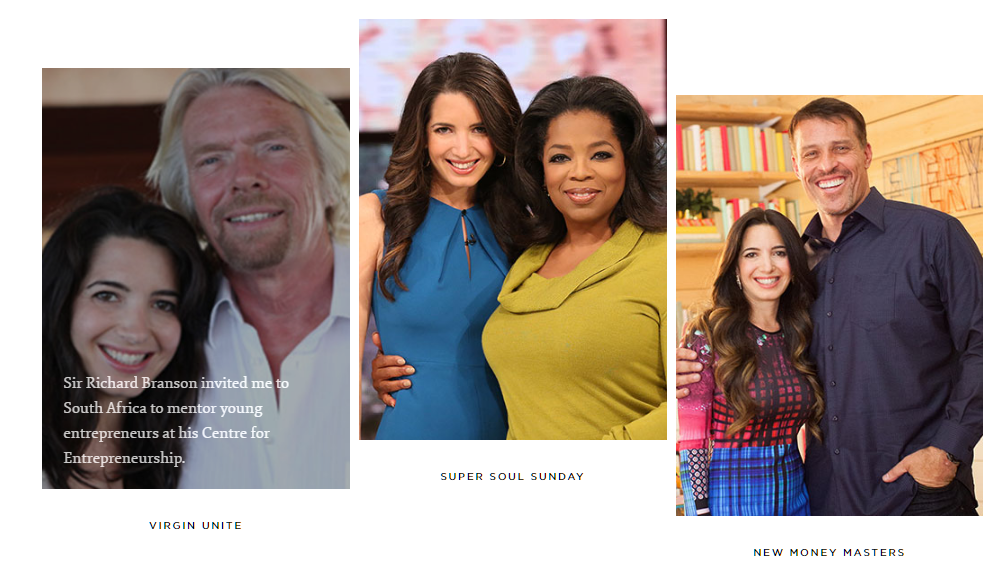
5 Ways to Create More Effective Social Proof
Imagine this scenario.
You want to go to a nice restaurant in an unknown mall. How do you decide?
Most likely you will walk around and look at how crowded each place is. If a place seems empty, you would assume that perhaps something about the food or the service is wrong.
However, if you saw a crowded place with people waiting for a table, you would assume that the food must be good.
This is social proof at work in our everyday life.
Humans are social creatures. When we are unable to decide for ourselves, we look to what other people are doing and assume that their actions are correct for the given situation, similar to a “monkey see, monkey do phenomena.”
Similarly, when it comes to buying online, social proof is the vehicle to remove customer fears, uncertainties and doubts.
But how do you use social proof more effectively? How do you incorporate it into your marketing to push up conversions?
In this post, I’m going to show you 5 tactics you can use right away to create a more effective social proof.
1. Focus on easy social proof first
Before you start, keep in mind that not all formats of social proof are created equal. If you want to use social proof to your advantage, you must understand how to get it right.
You want to focus on sourcing easy and more persuasive social proof first before you move on to more difficult ones.
For example, getting written testimonials from your users is relatively easy and can have a big impact on your conversions. On the other hand, in-depth video testimonials require a lot more effort.
BBolder.com, for instance, uses comments from its social profiles as social proof. You don’t even have to source these positive comments; they already exist on your social feeds.
Similarly, payroll software Gusto has a “Wall of Gusto” where it curates positive tweets from its customers.
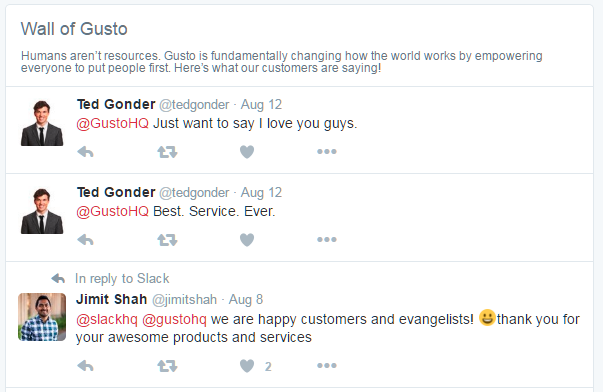
2. User testimonials should have pictures
Testimonials serve as powerful social proof because they provide credibility.
People tend to not believe marketing messages as they suspect companies to self-praise in hopes of gaining a sale. However, when you have a third party (a customer just like them) who has nothing to gain through flattery speaks highly of the product believability in the quality of the product dramatically rises.
Therefore, when you provide user testimonials on your pages, don’t just copy and paste the message but also ensure there is a high-quality photo along with it. People like looking at human faces as it makes it easy for people to relate emotionally especially if they are smiling (elicits happy emotion).
In fact, there’s even a study proving that customers react more positively to human pictures on websites.
Here is how KissMetrics provides testimonials on their pricing page.
Notice how the photos are high quality and the people look happy and inviting.
Furthermore, Kissmetrics makes their call-to-action “join these great companies by signing up today” blend in with the social proof left by their customers for maximum effectiveness.
3. Implement wisdom of the crowds
This method of social proof provides approval from large groups of people (think to the level of thousands, millions, and maybe even billions).
Think of how McDonald’s advertises “billions and billions served” on their signboards.

- FoMO (Fear of Missing Out): FoMO isn’t just a catchphrase; it’s an actual psychological phenomenon where people feel compelled to act lest they miss out on something popular. If you can show that your product is already loved by thousands of customers, you can trigger this FoMO impulse.
- Thousands of people can’t be wrong: This is where the “wisdom” part in “wisdom of the crowds” comes in – people assume that if you’re already loved by thousands of customers, surely, you must be doing something right.
Consider how Amazon handles upselling while a user is browsing for headphones:
If the user is browsing for headphones and they land upon one they like, he or she will naturally browse down the page to read more.
However, as soon as they do so, they will be shown suggestions to four other options of similar headphones (at different price points) which other customers actually bought after viewing this product:
This is an example of “wisdom of the crowds” in action – if people are buying something else after viewing a product, surely, they can’t all be wrong.
4. Position yourself as the customer’s “extended self”
Remember how humans are tribal creatures?
Everyone wants to fit in somewhere and have a sense of belonging and acceptance within a group.
When it comes to evaluating the opinions of others, our brains place more weight on those people who we deem to be similar to us.
Why?
Because we perceive our possessions as an extension of ourselves. When we come across testimonials which makes us feel part of that group, we feel more compelled to act.
Emphasize the similarity between your customers by creating specific marketing messages such as “join xx of your peers,” or “join xx other gaming enthusiasts.”
Here’s how to Convince and Convert use this type of social proof:
More than the “21,000” number, it’s the “peers” in the headline that matters. Convince and Convert sells you the idea that by joining the email list, you’ll be joining people who are similar to you.
It also plays on FoMO. By reminding visitors that their peers are already receiving these emails, Convince and Convert convinces its readers that they’ll miss out on useful advice lest they sign up.
5. Use expert social proof
We judge a person’s opinion on our overall impression of him or her.
Since influencers or experts already have an established reputation within a niche industry, we associate testimonials from them in a positive light.
If a product is good enough for them, it must be good for us as well – or at least that’s our assumption.
Here’s how Lewis Holmes (an influencer in his own right) uses expert social proof on his landing page:
A rolling testimonial slider beside his opt-in form which features testimonials from experts from AppSumo and HootSuite.
Marie Forleo does something similar – she shares her pictures with famous business personalities such as Sir Richard Branson and Tony Robbins.
Over to You
Social proof is the go-to tactic to ease the mind of indecisive and worried customers.
It isn’t just an abstract psychological concept but an actual method to build trust, increase conversions and grow your business.
Follow the 5 tactics shown above to radically increase your brand’s trust quotient and your revenues.
You read a lot. We like that
Want to take your online business to the next level? Get the tips and insights that matter.
